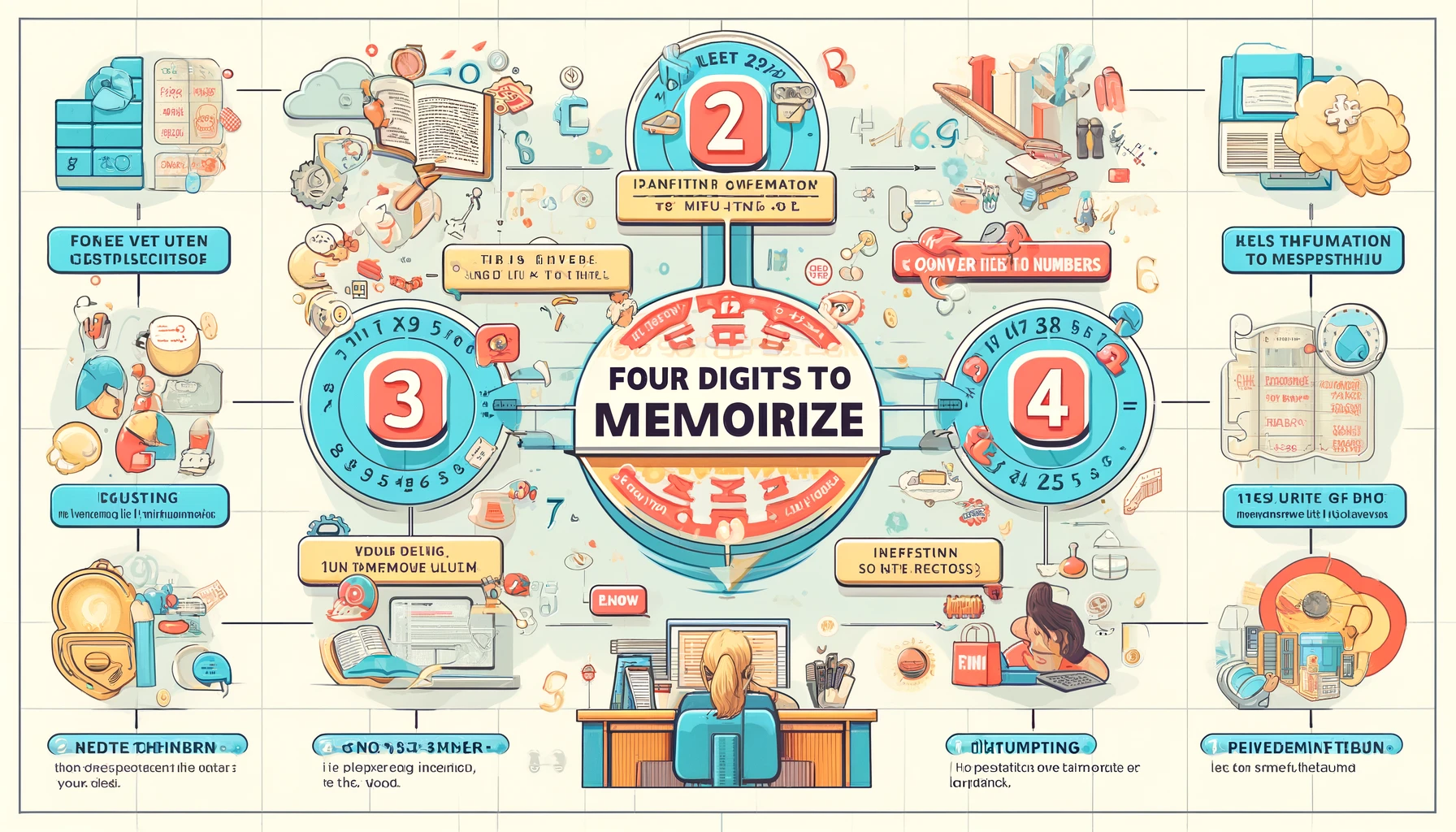In a world inundated with information, the need for quick and effective memorization techniques has become paramount. The “Four Digits to Memorize” method, popularized by The New York Times (NYT), offers a unique approach to this challenge. This article delves into the intricacies of this method, exploring its origins, applications, and effectiveness in improving memory retention.
Understanding the Four Digits to Memorize Method
The Four Digits to Memorize technique revolves around the idea of simplifying complex information into manageable chunks. This method is based on cognitive psychology principles that highlight how the human brain processes and retains information. By breaking down information into four-digit segments, individuals can enhance their ability to remember and recall data more efficiently.
Origins of the Four Digits to Memorize Method
The concept of using digit-based memory techniques is not new. It draws from ancient mnemonic strategies that have been adapted and refined over centuries. The NYT’s take on this method has modernized these age-old practices, making them accessible and relevant to today’s fast-paced digital era.
How the Method Works
The core of the Four Digits to Memorize method involves converting information into a series of four-digit numbers. This process leverages the brain’s natural affinity for numerical data, which is often easier to recall than abstract concepts. Here’s a step-by-step breakdown of how to implement this technique:
- Identify Key Information: Start by identifying the critical pieces of information that need to be memorized.
- Convert to Numbers: Transform these key pieces into four-digit numbers. This can be done through various encoding strategies, such as associating each piece with a number or using alphanumeric conversions.
- Chunking: Organize these numbers into groups of four digits each. This reduces cognitive load and makes the information more manageable.
- Repetition and Reinforcement: Regularly review and practice these digit groups to reinforce memory retention.
Applications of the Four Digits to Memorize Method
The versatility of the Four Digits to Memorize method makes it applicable in various fields. Here are some notable examples:
Educational Settings
In educational environments, students can use this technique to remember complex concepts, dates, and formulas. By breaking down information into four-digit segments, students can improve their recall abilities and perform better in exams.
Professional Use
Professionals can benefit from this method in scenarios where quick recall of information is crucial. For instance, medical practitioners can use it to remember drug codes, while IT professionals might find it useful for memorizing IP addresses or coding sequences.
Everyday Life
Even in everyday life, the Four Digits to Memorize technique can be a valuable tool. Whether it’s remembering phone numbers, passwords, or shopping lists, this method offers a practical solution for improving daily memory tasks.
Scientific Basis for the Four Digits to Memorize Method
The effectiveness of the Four Digits to Memorize technique is backed by scientific research in cognitive psychology and neuroscience. Studies have shown that the human brain is particularly adept at processing numerical information due to its inherent structure and function.
Cognitive Load Theory
Cognitive Load Theory suggests that the brain can only handle a limited amount of information at any given time. By breaking down information into smaller, manageable chunks (such as four-digit groups), the cognitive load is reduced, facilitating better processing and retention.
Chunking and Memory
Chunking is a well-documented memory strategy that involves grouping information into larger, meaningful units. The Four Digits to Memorize method takes advantage of this strategy by organizing data into four-digit segments, making it easier for the brain to store and retrieve information.
Numerical Memory
Research indicates that numerical data is often easier to remember than other types of information. The brain’s prefrontal cortex, responsible for short-term memory, shows increased activity when processing numbers. This heightened activity translates into better retention and recall.
Practical Tips for Implementing the Four Digits to Memorize Method
To effectively use the Four Digits to Memorize method, consider the following practical tips:
Consistency is Key
Regular practice and consistency are crucial for success. Set aside dedicated time each day to review and practice the four-digit groups.
Use Mnemonic Devices
Enhance the method by incorporating mnemonic devices. For example, create associations or stories that link the four-digit groups to familiar concepts or images.
Leverage Technology
Utilize apps and digital tools designed to aid memory retention. Many of these tools can help automate the conversion of information into four-digit segments and provide interactive practice sessions.
Stay Organized
Keep your four-digit groups organized in a systematic manner. Use notebooks, digital files, or index cards to catalog the information, ensuring easy access for review.
Conclusion
The Four Digits to Memorize method offers a powerful, scientifically-backed approach to improving memory retention. By leveraging cognitive psychology principles and the brain’s natural affinity for numerical data, this technique provides a practical solution for students, professionals, and individuals in everyday life. With regular practice and strategic implementation, the Four Digits to Memorize method can significantly enhance your ability to remember and recall important information.

Leave a Reply